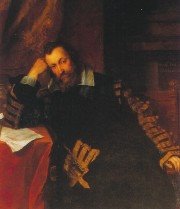* * *
The "rough wooing"
The Treaties of Greenwich fell apart soon after Mary's coronation. The betrothal did not sit well with the Scots, especially since Henry VIII suspiciously tried to change the agreement so that he could possess Mary years before the marriage was to take place. He also wanted them to break their traditional alliance with France. Fearing an uprising among the people, the Scottish Parliament broke off the treaty and the engagement at the end of the year.
Henry VIII then began his "rough wooing" designed to impose the marriage to his son on Mary. This consisted of a series of raids on Scottish territory and other military actions. It lasted until June 1551, costing over half a million pounds and many lives. In May of 1544, the English Earl of Hertford (later created Duke of Somerset by Edward VI) arrived in the Firth of Forth hoping to capture the city of Edinburgh and kidnap Mary, but Marie de Guise hid her in the secret chambers of Stirling Castle.
On September 10, 1547, known as "Black Saturday", the Scots suffered a bitter defeat at the Battle of Pinkie Cleugh. Marie de Guise, fearful for her daughter, sent her temporarily to Inchmahome Priory, and turned to the French ambassador Monsieur D'Oysel.
The French, remaining true to the Auld Alliance, came to the aid of the Scots. The new French King, Henri II, was now proposing to unite France and Scotland by marrying the little Queen to his newborn son, the Dauphin François. This seemed to Marie to be the only sensible solution to her troubles. In February 1548, hearing that the English were on their way back, Marie moved Mary to Dumbarton Castle. The English left a trail of devastation behind once more and seized the strategically located town of Haddington. By June, the much awaited French help had arrived. On July 7, the French Marriage Treaty was signed at a nunnery near Haddington.
Childhood in France
With her marriage agreement in place, five-year-old Mary was sent to France in 1548 to spend the next ten years at the French court. Henri II had offered to guard her and raise her. On August 7, 1548, the French fleet sent by Henry II sailed back to France from Dumbarton carrying the five-year-old Queen of Scotland on board. She was accompanied by her own little court consisting of two lords, two half brothers, and the "four Marys", four little girls her own age, all named Mary, and the daughters of some of the noblest families in Scotland: Beaton, Seton, Fleming, and Livingston.
Vivacious, pretty, and clever (according to contemporary accounts), Mary had a promising childhood. While in the French court, she was a favourite. She received the best available education, and at the end of her studies, she had mastered French, Latin, Greek, Spanish, and Italian in addition to her native Scots. She also learned how to play two instruments and learned prose, poetry, horsemanship, falconry, and needlework.

On April 24, 1558 she married the Dauphin François at Notre Dame de Paris. When Henri II died on July 10, 1559, Mary became Queen Consort of France; her husband became François II of France.
http://en.wikipedia.org/wiki/Mary_queen_of_scots
* * *

No comments:
Post a Comment